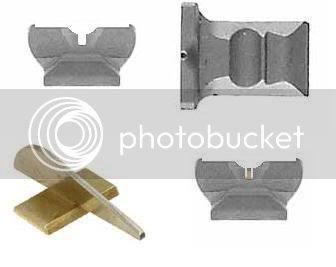Walruskid:
I'm curious, did Sgt York ever write a memoire, I'd love to read that!
The Diary of Alvin York - (Click for link)
Excerpt: 10/08/1918
So by this time some of the Germans from on the hill was shooting at us. Well I was giving them the best I had, and by this time the Germans had got their machine guns turned around and fired on us. So they killed 6 and wounded 3 of us. So that just left 8, and then we got into it right by this time. So we had a hard battle for a little while--
I don't know whether it was the German major, but one yelled something out in German that we couldn't understand. And then the machine guns on top swung around and opened fire on us. There were about thirty of them. They were commanding us from a hillside less than thirty yards away. They couldn't miss. And they didn't!
They killed all of Savage's squad; they got all of mine but two; they wounded Cutting and killed two of his squad; and Early's squad was well back in the brush on the extreme right and not yet under the direct fire of the machine guns, and so they escaped. All except Early. He went down with three bullets in his body. That left me in command. I was right out there in the open.
And those machine guns were spitting fire and cutting down the undergrowth all around me something awful. And the Germans were yelling orders. You never heard such a 'racket in all of your life. I didn't have time to dodge behind a tree or dive into the brush, I didn't even have time to kneel or lie down.
I don't know what the other boys were doing. They claim they didn't fire a shot. They said afterwards they were on the right, guarding the prisoners. And the prisoners were lying down and the machine guns had to shoot over them to get me. As soon as the machine guns opened fire on me, I began to exchange shots with them.
I had no time nohow to do nothing but watch them-there German machine gunners and give them the best I had. Every time I seed a German I jes teched him off. At first I was shooting from a prone position; that is lying down; jes like we often shoot at the targets in the shooting matches in the mountains of Tennessee; and it was jes about the same distance. But the targets here were bigger. I jes couldn't miss a German's head or body at that distance. And I didn't. Besides, it weren't no time to miss nohow.
I knowed that in order to shoot me the Germans would have to get their heads up to see where I was lying. And I knowed that my only chance was to keep their heads down. And I done done it. I covered their positions and let fly every time I seed anything to shoot at. Every time a head come up I done knocked it down. Then they would sorter stop for a moment and then another head would come up and I would knock it down, too. I was giving them the best I had.
I was right out in the open and the machine guns [there were over thirty of them in continuous action] were spitting fire and cutting up all around me something awful. But they didn't seem to be able to hit me. All the time the Germans were shouting orders. You never heard such a racket in all of your life. Of course, all of this only took a few minutes. As soon as I was able I stood up and begun to shoot off-hand, which is my favorite position. I was still sharpshooting with that-there old army rifle. I used up several clips. The barrel was getting hot and my rifle ammunition was running low, or was where it was hard for me to get at it quickly. But I had to keep on shooting jes the same.
In the middle of the fight a German officer and five men done jumped out of a trench and charged me with fixed bayonets. They had about twenty-five yards to come and they were coming right smart. I only had about half a clip left in my rifle; but I had my pistol ready. I done flipped it out fast and teched them off, too.
I teched off the sixth man first; then the fifth; then the fourth; then the third; and so on. That's the way we shoot wild turkeys at home. You see we don't want the front ones to know that we're getting the back ones, and then they keep on coming until we get them all. Of course, I hadn't time to think of that. I guess I jes naturally did it. I knowed, too, that if the front ones wavered, or if I stopped them the rear ones would drop down and pump a volley into me and get me.
Then I returned to the rifle, and kept right on after those machine guns. I knowed now that if I done kept my head and didn't run out of ammunition I had them. So I done hollered to them to come down and give up. I didn't want to kill any more'n I had to. I would tech a couple of them off and holler again. But I guess they couldn't understand my language, or else they couldn't hear me in the awful racket that was going on all around. Over twenty Germans were killed by this time.
Eventually 132 Germans surrendered to York and his two remaining men that afternoon!





